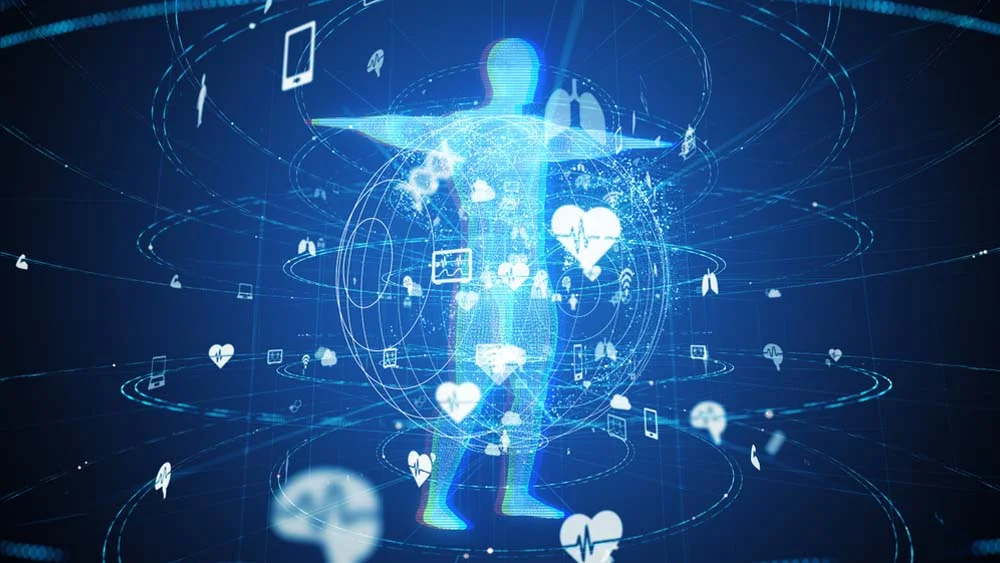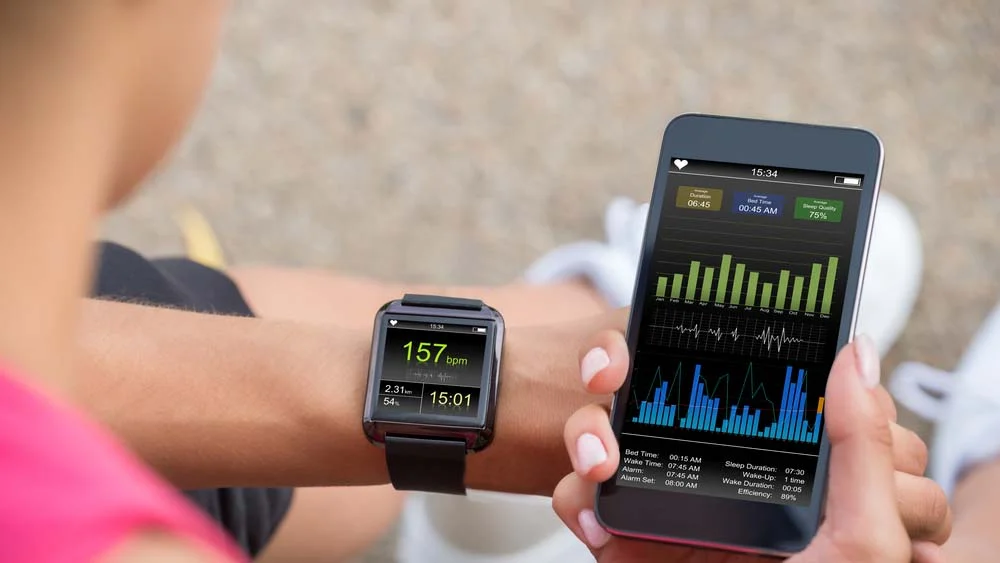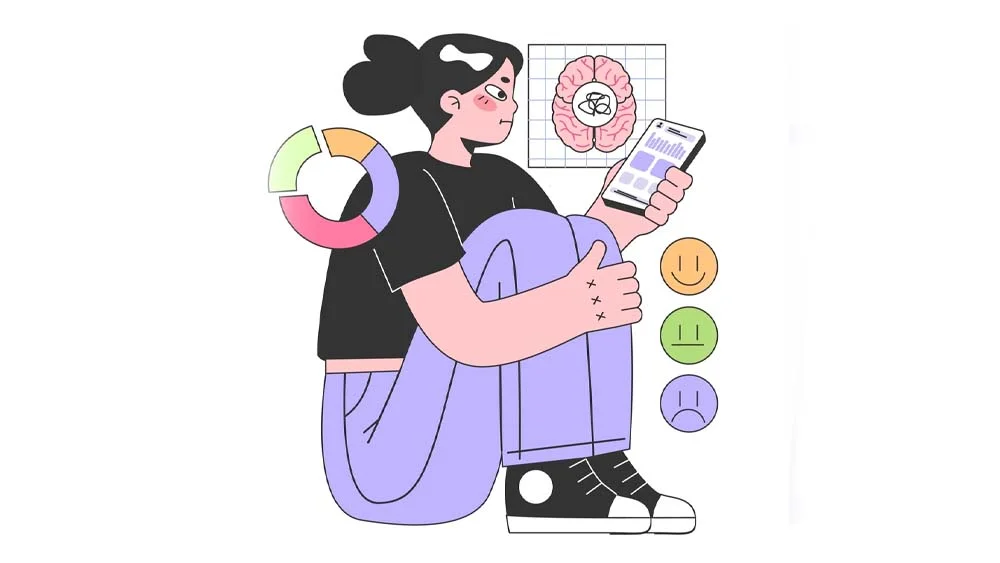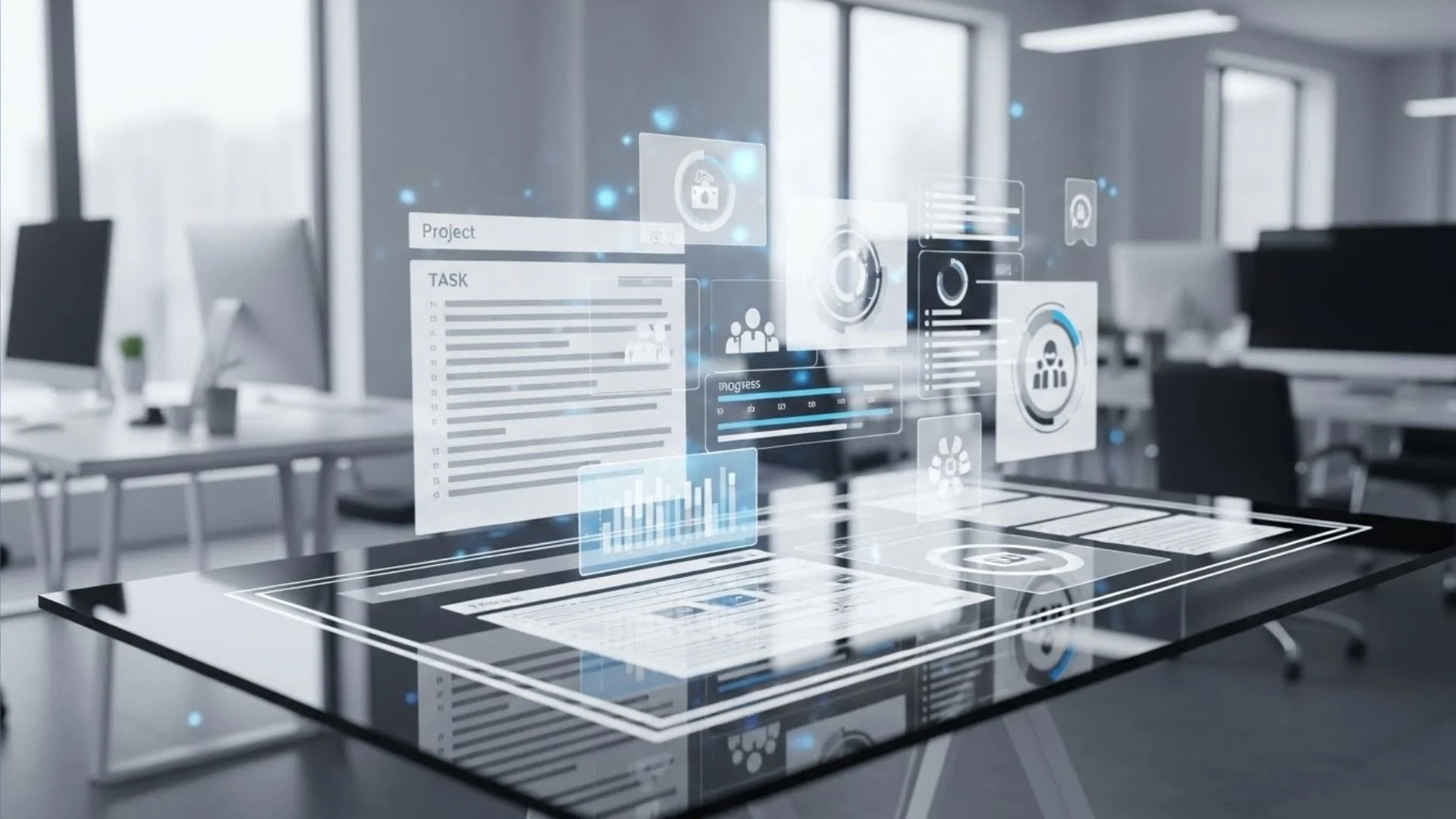Imagine if your contact lenses can detect changes in your glucose levels. Sounds like something out of a sci-fi movie, right? Well, welcome to the present. This isn’t the future; it’s happening right now, thanks to the Internet of Things (IoT) in healthcare.
IoT, in simple terms, is all about connecting everyday devices to the internet, allowing them to send and receive data. Now, when you bring this tech into the healthcare scene, things get really interesting.
How? Well, we’re talking about devices that can monitor your health, alert doctors in real-time, and even help in predicting potential health risks. It’s almost like having a doctor right in your pocket or on your wrist, working 24/7 to keep you healthy.
(We’re already pretty close to it; think smart watches, right?)
But it’s not just about cool gadgets. The real magic of technology is how it’s making medical care more proactive, personalized, and efficient. With connected devices playing a pivotal role, we’re shifting from a reactive approach (treating illnesses) to a proactive one (preventing them). Let’s explore how these connected devices are saving lives.
The Rise of the Internet of Medical Things (IoMT)
Internet of Things (IoT) is where everyday objects, from your fridge to your car, get a digital makeover and start “talking” to each other. But when you add the medical world into this mix, you get the Internet of Medical Things (IoMT).
So, what’s the big deal about it
The IoMT is like the tech-savvy cousin of the IoT, specifically tailored for the healthcare sector. It’s a network of interconnected medical devices, health services, and systems that communicate with each other. From wearable fitness trackers and smart inhalers to connected hospital beds and remote patient monitoring tools, all work in harmony.
These devices collect, analyze, and transmit health data, making it easier for healthcare professionals to keep tabs on patients, whether they’re in the hospital or chilling at home.
But what’s interesting is that IoMT isn’t just a passing trend; it’s skyrocketing.
With the increasing demand for real-time patient monitoring and the rise of telehealth, especially post-pandemic, the number of connected medical devices is booming. Additionally, the growing concern over telemedicine cost has led to more affordable and accessible options for patients and providers alike. As IoT devices continue to make waves in patient monitoring and care, integrating modern educational avenues can further enhance this industry. One striking example is the rise of remote healthcare education platforms like the online medical assistant class. These courses provide aspiring medical assistants with necessary skills and training, preparing them for roles where they might operate such advanced IoT devices in various healthcare settings.
According to industry reports, the IoMT market is expected to reach a staggering value of over $187 billion by 2028. That’s a lot of smart devices and a clear indication of where healthcare is headed.
The beauty of the IoMT lies in its potential to make healthcare IoT platform more accessible and efficient. As more devices come online, patients can expect more personalized care, and doctors can make better-informed decisions.
It’s a win-win, with technology leading the charge in redefining the future of medical care.
So What are Transformative IoT Applications in Healthcare?
The beauty of IoT applications in healthcare isn’t just in the health apps or devices themselves, but in the real-world problems they’re solving. Let’s dive into some of the game-changing applications that are making a difference in patients’ lives.
Remote Patient Monitoring
Gone are the days when keeping tabs on a patient’s health meant they had to be physically present in a hospital. With remote patient monitoring, doctors can keep an eye on their patients no matter where they are.
These systems use a combination of wearable devices, mobile apps, and cloud-based platforms to track everything from heart rate to sleep patterns.
This is perfect for the travel nurse job. If a patient with a heart condition is at home and their device detects an irregular heartbeat, it can instantly *alert the nurse regardless of where they are. It’s like having a 24/7 health guardian, ensuring patients get timely care without the constant hospital visits, advices Mark Stevens, CMO at Basic Life Support Training.
Glucose Monitoring
For folks with diabetes, monitoring glucose levels is a daily reality. Traditional methods required finger pricks and manual logging, which can be both painful and tedious. Well, enter IoT-enabled glucose monitors.
These smart devices continuously track glucose levels, sending real-time data to smartphones or dedicated devices. If sugar levels go too high or too low, the device can alert the user, allowing for immediate action. It’s making diabetes management less intrusive and more accurate.
Heart-rate Monitoring
Your heart is your body’s engine, and keeping it in tip-top shape is crucial. With IoT-enabled heart-rate monitors, tracking cardiac health has never been easier. These aren’t just for athletes or fitness enthusiasts.
Anthony Dutcher, Chief Marketing Officer of Veriheal says, “For patients with heart conditions, heart-rate enabled wearable devices offer continuous monitoring without being tied down to bulky hospital equipment. Whether it’s a smartwatch or a dedicated heart-rate band, these devices keep a close eye on heart rhythms, alerting users and doctors to any potential issues. It’s peace of mind, right on your wrist.”
Hand Hygiene Monitoring
Let’s start with something we often take for granted: hand hygiene. It’s a simple act, but in healthcare facilities, it’s a critical line of defense against infections. With the integration of IoT, hand hygiene has gone high-tech.
Specialized sensors and wearables can now monitor and ensure that medical staff are washing their hands regularly and adequately. If a nurse or doctor forgets to sanitize before attending to a patient, the system can send them a reminder.
And it’s not about policing but about reinforcing good habits. By ensuring consistent hand cleanliness, these IoT systems play a pivotal role in reducing infection rates, making hospitals and clinics safer for everyone.
Depression and Mood Monitoring
Mental health is as crucial as physical well-being, and with the rise of IoT, monitoring emotional health has taken a leap forward. Wearable devices, equipped with sensors, can now track indicators linked to mood and mental well-being, says Dr Kate Jameson, Medical Director at Youth Lab.
For instance, changes in sleep patterns, heart rate variability, and even voice tone can provide insights into a person’s emotional state. If the system detects patterns consistent with depression or anxiety, it can alert both the user and their healthcare provider.
This real-time monitoring offers a more holistic view of health, ensuring that mental well-being is always part of the conversation.
Parkinson’s Disease Monitoring
Parkinson’s disease is a neurological condition that affects movement. For those living with it, symptoms can vary throughout the day, making management a challenge.
Well, not with IoT-enabled monitoring systems.
These devices, often wearable, continuously collect data on tremors, gait, and other movement-related metrics. By analyzing this data, doctors can get a clearer picture of symptom severity and fluctuations throughout the day.
So this continuous monitoring allows for more personalized treatment plans, ensuring that patients receive the right care at the right time.
Douglas McShane, Operations Director at Leeds First Aid Courses believes, “The IoT applications in healthcare are vast and varied. From ensuring clean hands to tracking neurological symptoms, these smart devices are making a tangible difference. It shows how technology, when used thoughtfully, can enhance care and improve lives.”
Innovations Beyond Monitoring
While monitoring is a significant facet of IoT applications in healthcare, the horizon of innovation stretches far beyond just keeping tabs on health metrics. The realm of IoT is bustling with groundbreaking inventions that are redefining patient care and medical procedures.
Connected Inhalers
For those grappling with respiratory conditions like asthma or COPD, managing flare-ups is crucial. Connected inhalers are stepping in to make this task easier. These smart devices not only deliver medication but also track usage patterns.
If you sync them with smartphones or cloud platforms, they can provide insights into when and where attacks are most likely to occur.
Michael Hess, Tech Expert at Code Signing Store explains with an example, if a user frequently needs their inhaler in a particular park, it might indicate an allergen in that area triggering the attacks. By understanding these environmental triggers, patients can make informed decisions, reducing the risk of severe flare-ups.
Ingestible Sensors
The idea of swallowing a sensor might sound like something out of a spy movie, but it’s a reality in today’s medical world. These tiny, pill-sized devices journey through the digestive system, collecting data from within the body. Whether it’s monitoring medication adherence or assessing gut health, these sensors provide a non-invasive way to gather internal insights.
Once their job is done, they’re naturally expelled from the body, making the whole process seamless and hassle-free.
Connected Contact Lenses
The humble contact lens is getting a tech makeover. Researchers are developing lenses equipped with micro-sensors that can monitor various health metrics, from glucose levels in tears to potential signs of eye diseases, says Andrew Priobrazhenskyi, CEO and Director at DiscountReactor.
Beyond health monitoring, these lenses also hold promise for augmented reality applications, overlaying digital information onto the user’s field of vision. It’s a blend of health and tech, offering both care and convenience.
Robotic Surgery
Surgery has always been a field where precision is critical. With the help of IoT-enabled robots, surgical procedures are reaching new heights of accuracy. These robots, guided by skilled surgeons, can perform intricate operations with minimal invasiveness.
The result? Faster recovery times, reduced hospital stays, and, most importantly, increased surgical precision. It’s a testament to how technology is enhancing the hands of medical professionals, ensuring optimal patient outcomes.
Sean Clough, President of Harmony Lab and Safety Supplies adds, “The world of IoT applications in healthcare is not just about monitoring; it’s about revolutionizing. With each innovation, we’re moving closer to a future where healthcare is more efficient, personalized, and, above all, patient-centric.”
Here are Examples of Real-World Implementations
The potential of IoT in healthcare is vast, but what truly brings its value to light are the real-world implementations that are making tangible differences in communities worldwide.
Let’s explore a couple of standout stories that showcase the transformative power of IoT in action.
Simprints
In regions hit by disasters or lacking robust infrastructure, accessing healthcare can be a significant challenge. Recognizing this, Simprints developed a biometric fingerprint solution tailored for these environments.
Instead of relying on paper records or easily lost ID cards, individuals can be identified and matched to their health records using just their fingerprints. This ensures that even in the most challenging conditions, people can access the medical care they need without administrative hurdles.
It’s a prime example of how technology can bridge gaps, ensuring that healthcare access isn’t a privilege but a right, regardless of where one lives.
Nexleaf Analytics
Vaccines are a cornerstone of public health, but their efficacy hinges on proper storage. In remote areas, where electricity and refrigeration can be sporadic, maintaining the cold chain for vaccines becomes a daunting task.
Well, enter Nexleaf Analytics with their ColdTrace sensors. These IoT-enabled devices monitor the temperature of vaccine storage units in real-time. If temperatures deviate from the optimal range, alerts are sent out, allowing for immediate action. This ensures that vaccines remain potent and effective, even in the most remote corners of the world.
How Does The Future of IoT Looks Like in Healthcare
It’s clear that the Internet of Things (IoT) is a force of change, reshaping how we approach medical care, patient experience, and global health challenges. So, what does the future hold for IoT in applications in healthcare?
Let’s explore some predictions and trends that might shape the next decade.
Predictions and Trends for the Next Decade
- Wider Integration of Wearables: While wearables like fitness trackers and smartwatches are already popular, expect to see them become even more integrated into standard healthcare practices. They’ll not just track steps or heart rate but might monitor hydration levels, predict potential illnesses, or even offer real-time feedback on stress levels.
- Smart Hospitals: The concept of smart cities will extend to hospitals. These will be facilities where everything, from patient beds to surgical equipment, is interconnected. This will allow for more efficient patient care, real-time data analysis, and even AI-driven diagnostics.
- Home as the New Health Hub: With remote patient monitoring on the rise, our homes will transform into personalized health hubs. IoT devices will monitor air quality, suggest exercise routines, or even remind patients to take their medication, all tailored to individual health needs.
- IoT in Mental Health: Beyond physical well-being, there will be a surge in devices and platforms catering to mental health. This could range from wearables detecting anxiety triggers to smart rooms adjusting lighting and sound based on a person’s mood.
Bridging Health Equity Gaps Globally
One of the most promising roles of IoT applications in healthcare is its potential to bridge health equity gaps. In many parts of the world, access to quality healthcare is a challenge due to geographical, economic, or infrastructural barriers. IoT can play a pivotal role in addressing these challenges:
- Remote Diagnostics: For communities located far from medical facilities, IoT devices can offer remote diagnostics, allowing local caregivers to consult with specialists from around the world.
- Affordable Health Solutions: IoT devices, especially when mass-produced, can offer cost-effective health solutions, making medical care more accessible to economically disadvantaged populations.
- Education and Awareness: Connected devices can also serve as platforms for health education, spreading awareness about diseases, preventive measures, and healthy habits.
Conclusion
Gerrid Smith, CMO of Joy Organics concludes, “Whether it’s a wearable device that makes daily life easier for a diabetes patient or a remote monitoring system that brings medical expertise to distant communities, the ultimate goal is to enhance the quality of life for everyone. As we look ahead, the challenges are evident, from security concerns to ensuring global accessibility. Yet, with collaboration, innovation, and a shared vision, the future of healthcare, powered by IoT, is going to save a lot more lives.”






